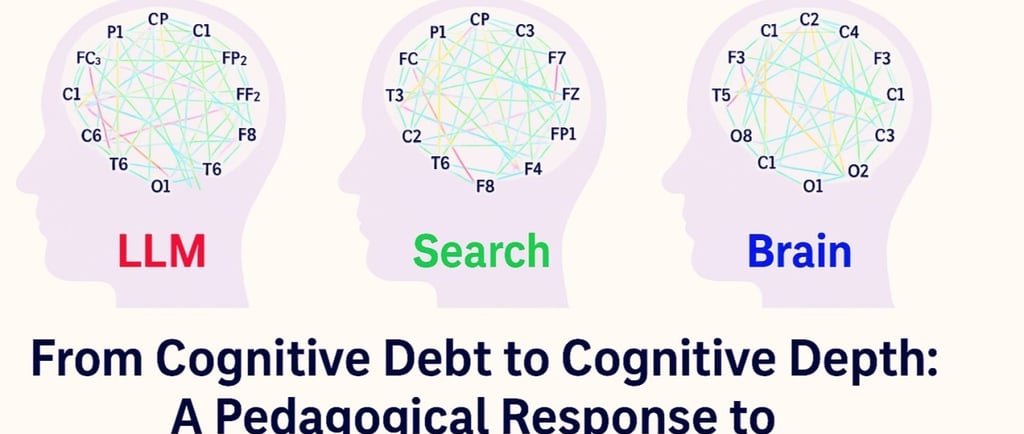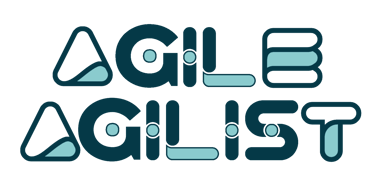Collapse of Attention: The Cognitive Debt Crisis
Are we outsourcing our thinking to AI? A groundbreaking MIT study reveals a hidden cost of AI tools and social media: cognitive debt—a measurable decline in our brain’s engagement when we rely too heavily on tech.
Mark Saymen
7/20/20252 min read


In an age where AI tools and social media platforms promise enhanced efficiency and unlimited access to knowledge, a more sobering narrative is beginning to emerge—one of cognitive debt, attention fragmentation, and declining neural engagement. New studies, including a landmark 2025 EEG study by MIT, suggest that the very tools meant to amplify our thinking may, over time, diminish our capacity to think deeply at all.
What Is Cognitive Debt?
The term "cognitive debt"—coined in the 2025 MIT Media Lab study titled "Your Brain on ChatGPT"—describes the long-term mental cost of outsourcing cognitive work to artificial intelligence.
Researchers tracked participants writing essays across three conditions:
Without assistance (brain-only)
With traditional search tools (Google)
With AI (ChatGPT)
The results were clear:
Brain-only participants showed the strongest EEG connectivity—especially across alpha, beta, and delta brain wave bands.
LLM users exhibited the weakest neural connectivity, reporting lower ownership of their output and struggling to recall what they'd written.
When switching tools, those who began with AI failed to fully recover their cognitive engagement, even after returning to manual writing.
This suggests AI tools, while helpful, can fundamentally change how our brains engage with learning, reasoning, and memory.
The Attention Economy: A Parallel Threat
The concept of cognitive debt doesn’t stop at AI writing. It mirrors patterns long observed in how social media affects attention spans:
🔹 Gloria Mark, professor of informatics at UC Irvine, found that the average attention span on a single screen task dropped from 2.5 minutes in 2004 to just 47 seconds in 2023.
🔹 This collapse is fueled by constant digital interruptions, micro-tasks, and content feeds optimized for dopamine, not depth.
🔹 Linda Stone’s theory of “continuous partial attention” reveals a generation trapped in a loop of shallow awareness—always scanning, rarely engaging.
When we combine this with AI writing tools, we aren’t just distracted. We are delegating our thinking. And like a muscle unused, the brain's ability to synthesize, reflect, and recall weakens over time.
Jevons Paradox in the Age of Information
This creates a modern version of Jevons Paradox: the more efficient our tools, the more we use them—not less.
AI makes writing faster → so we write more, not better
Social media makes connection easier → so we connect more, but meaning less
Notifications make feedback immediate → so we crave it constantly
This paradox leaves us overstimulated and under-reflective.
What We Can Do
Despite these challenges, there is a path forward:
Mindful AI use: Use AI to draft, but do final thinking, editing, and summarizing manually
Deep work sessions: Schedule regular time without tools to strengthen cognitive independence
Digital hygiene: Reduce notifications, limit multitasking, and invest in fewer but deeper conversations
Track cognitive load: Reflect weekly on tasks that energized vs. drained your mental capacity
Final Thought
We’ve crossed into a new era where the most valuable resource isn’t information—it’s attention.
If we’re not intentional, AI and social platforms will consume our mental bandwidth, leaving behind a generation adept at prompting—but struggling with meaning.
To lead, to innovate, to transform—we must protect our mental depth. This is the true lesson of cognitive debt:
Efficiency is not the enemy—but unconscious efficiency is.
Let’s build a future where tools serve thinking—not replace it.
